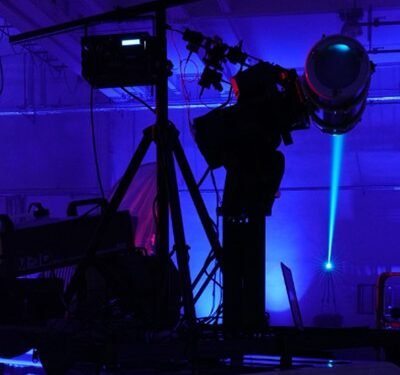Quantum computing gets a lot of attention for its potential to break encryption, but it might also make special operators’ communications more secure than ever.
Late last year, a company called Rhea Space Activity demonstrated its quantum communications prototype, QLOAK, in Norway for representatives of U.S. Special Operations Command, Norwegian Special Operations Command, and the Norwegian Defense Research Establishment.
QLOAK promises the ability to “bolt on” to existing laser communications terminals and enable quantum communications, using free-space optics to establish secure links over large distances.
In the October 2023 demonstration, the the Washington, D.C.,-based company sent a simple, highly encrypted message: “grundighet gir trygghet”—or in English, “thoroughness gives security.”
Cameo Lance, the company’s co-founder and COO, said the Norway demonstration was a “pivotal step” that “showed we were capable of free-space optical communications outside of a pure laboratory environment.”
It also nodded toward a similar capability to China, which in 2016 reportedly linked two ground stations 1,000 kilometers apart.
“Interoperable communication is critical in the Arctic but is extremely difficult to implement,” a U.S. Special Operations Command spokesperson said when asked about the demonstration. “The Arctic environment presents significant challenges for military operations – harsh temperatures, a predominantly sea and ice environment, poor terrestrial data and communications infrastructure due to a lack of large population centers, and complex ongoing climate, environmental, political, economic, and cultural developments.
RSA’s prototype uses lasers instead of radio signals to bounce signals off satellites, increasing the data rate and decreasing the likelihood of interception.
“Laser signals are highly directed compared to that of radio signals. For example, when a satellite in Low Earth Orbit communicates with the ground using a radio, it will typically send a signal to an area the size of West Virginia. When using lasers, the signal is only accessible to an area on the ground that is about the size of a school bus, which inherently reduces the chance of interception by an adversary,” Lance said.
QLOAK uses quantum key distribution to add another layer of security, encoding information in single photons, he said.
Lawmakers have become increasingly interested in quantum, particularly for its potential military applications. The House version of the 2025 National Defense Authorization Act would require the Pentagon to make a plan to take quantum tech from prototypes to operational use, including the development and adoption of a “fault-tolerant, utility-scale quantum computer.”
The test comes as U.S. and Chinese engineers race to build the first practical quantum computer and militaries prepare for its arrival. For example, China has been working on a space-based network that would use quantum mechanics to secure data transmission.
While spending on quantum information-science tech has been somewhat flat, spending on quantum IT and cryptography saw a compounded annual growth of 23 percent to $619 million from fiscal years 2019 to 2023, according to an analysis by data firm Govini. Overall government spending on quantum hit $4.1 billion, mostly on computing—down 3.5 percent per the compounded annual growth rate.
The test is only the first phase of QLOAK’s development. Cybersecurity testing is planned as part of the next phase “as the technology is transitioned from an experimental demonstration into a fieldable prototype capability,” Lance said. “Our developments related to quantum communication are also enabling other disruptive technologies including large-scale distributed quantum computers, which are specialized for use in codebreaking, and networks of hyper-reactive quantum sensors for improved situational awareness.”
For special operators, the tech could offer more secure, latency-free, and ultimately, more communications. And the demonstration with RSA was designed as a “gamified futuristic” scenario to test unclassified communications with international partners.
U.S. Special Operations Command is experimenting with quantum communications but has not set a timeline for fielding it, a command spokesperson said. For now, USSOCOM is working with academic institutions and university-affiliated research centers, the Department of Energy, military service laboratories, and non-traditional defense contractors “to start transitioning basic research in quantum science into Special Operations-peculiar applications for increased operator capability in the future.”
But the Norway test with USSOCOM may offer a glimmer of that future.
“To make quantum communications competitive and globally relevant, we’re developing advancements in hardware including lasers and control electronics to improve signal rates, better filtering for daytime operation, more sensitive detectors, and miniaturization of electronics to reduce the size and weight of the system,” Lance said.
RSA is planning more quantum communications demonstrations on various platforms, including drones and ships. The company is also planning to test its autonomous navigation designed to work in areas without GPS access, the Jervis Autonomy Module, during a lunar initiative with Draper that will fly NASA’s CP-12 science payloads to the Moon.










